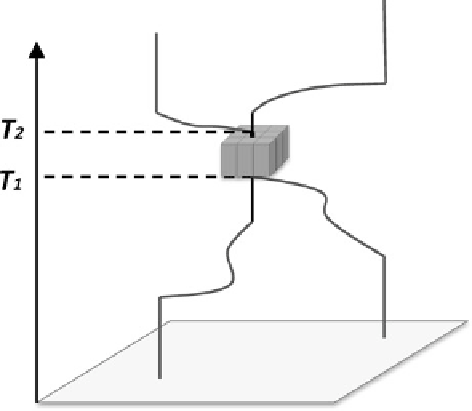Geography Reference
In-Depth Information
series shows comparably large fluctuations in the early days and then some small
fluctuations before settling into a rather regular pattern.
A possible interpretation of the pattern is that the individual was new to the
area, wandered around and narrowed his/her job search to a specific region. Once
the individual found a job, the person tried different routes to work (circle a
in Fig.
20.13
) and then settled with a regular route to commute. The regular
fluctuations correspond to track differences in weekdays and weekends. After the
person settled down to a regular routine for a while, the person's pattern varied
again, which might be due to exploration of one's neighborhoods or participation
in social activities (circles b, c, and d in Fig.
20.13
), and eventually grew to a
new pattern (circle e in Fig.
20.13
) which can be related to the late-night outings
in Fig.
20.12
. While the interpretation is speculative and requires validation with
interviews or auxiliary data, the example shows that daily cumulative differences in
track analysis can reveal the development of and changes in patterns of life implied
by an individual's movements in space and time.
20.5.3
Identify Opportunities for Interactions in Space
and Time
In the framework of time geography (Fig.
20.1
), paths in proximity in space and
time can be considered to coexist and therefore offer opportunities for interactions
(Fig.
20.14
). Similar ideas can be used to identify individuals with opportunities
to interact based on their proximity in space and time. Studies may focus on
opportunities for sustained interactions and therefore discount the cases when two
Fig. 20.14
Space-time
coincidence indicative of
opportunity for interactions

Search WWH ::

Custom Search